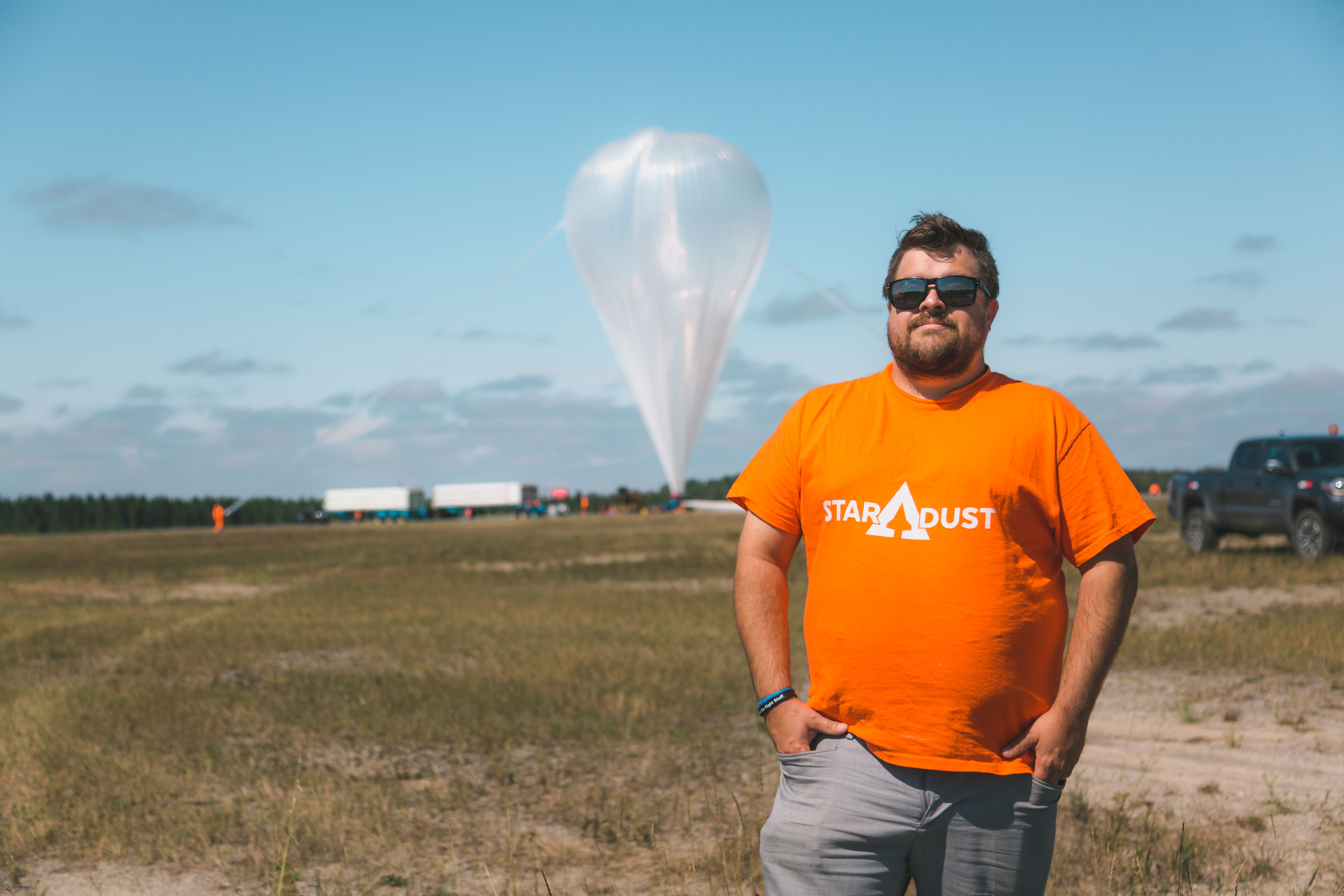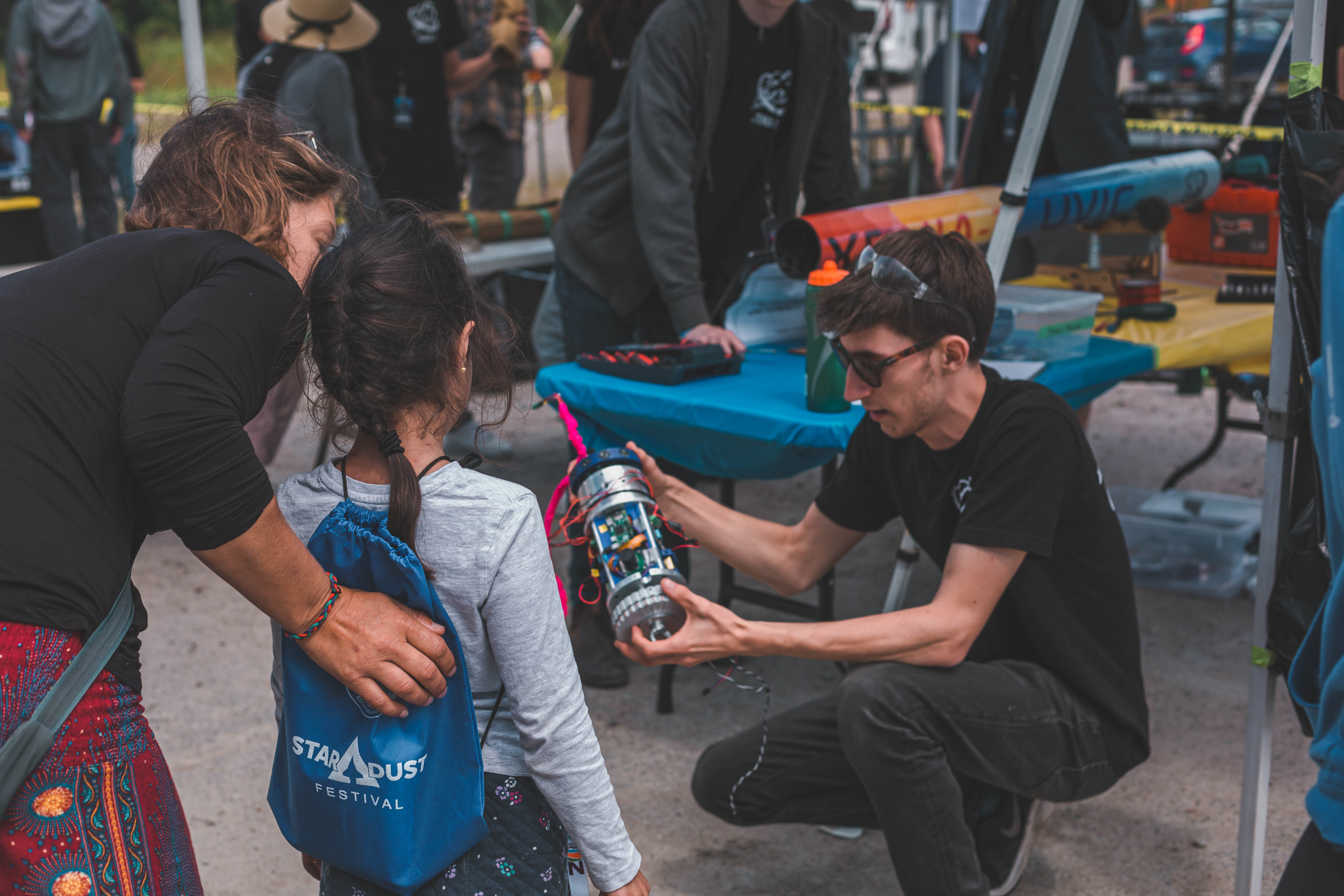By Allison Clark , Heather McGeer
“It’s not rocket science,” said Jason Michaud, founder and Chief Executive Officer of Stardust, a Canadian aerospace technology company. Stardust is a unique startup that works to solve complex aerospace problems through technology while simultaneously increasing access to science, technology, engineering, and math (STEM) education and opportunities for rural communities. ICTC sat down with Jason to learn more about his work.
Jason Michaud is of French and Métis heritage and was raised in Dubreuilville, a small lumber village near Michipicoten First Nation in northern Ontario. Growing up in a remote community that is economically reliant on natural resources, Jason felt that youth commonly followed career paths in forestry or mining. Jason always had a keen interest in computers and technology, but “there were never really opportunities for kids like me who wanted to do stuff outside the norm.”
Nevertheless, Jason followed his passion and became the first of his family to complete high school and pursue post-secondary education, studying Computer Engineering at Collège Boréal. Right after college, Jason found his footing in the space industry, working on virtual reality (VR) solutions to mental health and wellbeing challenges faced by astronauts. However, despite gaining a formal education in STEM and working with the National Research Council and the Canadian Space Agency on his ventures, Jason explained that he struggled with feelings of imposter syndrome and sentiments that he wasn’t “smart enough for this.”

As his career progressed and Jason found a sense of community with his colleagues, he began to overcome barriers like imposter syndrome. He felt called to give back to his home community to empower youth that may be facing the same struggles he did growing up. His mission evolved into working to improve access to STEM education and opportunities for youth in rural Indigenous communities, showing his community that careers in STEM are possible for them.
“It fuels me to show these kids that, hey, you can do this—and not only just bringing the STEM [opportunities] to them, it’s also creating an industry for them in the north.”
Increasing STEM Education and Opportunities in Northern Ontario
Many remote and rural communities, including Indigenous communities, are pursuing economic development to help retain young people in their regions. Jason sees an important role for himself and Stardust in supporting these efforts. Jason’s vision is that engineers and astrophysicists shouldn’t need to go to Toronto to develop components for spacecrafts or rockets and that Indigenous youth are encouraged to explore STEM interests without having to leave their home communities. Thinking big, Jason began working in partnership with Mattagami First Nation to develop a centre for STEM and aerospace education and innovation. With close to 200 acres across the traditional lands of the Mattagami First Nation provided for this initiative, the Stardust Space Centre will be established as a northern technology and innovation hub.
While the centre intends to provide STEM education, jobs, and opportunities, it has also prioritized broader involvement with the entire community. Stardust Alliance, a not-for-profit organization, of which Jason is the president, takes the lead in driving community engagement initiatives, culminating in a weeklong festival at the end of every summer. The inaugural event took place in 2022. The Stardust Festival introduces K-12 youth, university students, career transitioners, and community members of all ages to the space industry through immersive activities, speakers, exhibitions, a career fair, direct engagement with employers, and a rocket launch competition, all while celebrating Indigenous culture, communities, and traditions.
Despite skepticism about whether people would come to remote communities in northern Ontario, after a few years of planning, Jason’s idea to “bring the whole industry to a festival” came to fruition. “No one really believed it till it actually happened,” Jason recalled, but 250 people from the aerospace and defence industries, including representatives from the Canadian Space Agency, NASA, the Air Force, and Blue Origin, travelled to Cochrane, ON, a small community near the Mattagami First Nation, to participate in the festival in 2022. In 2023, attendance numbers are expected to grow to close to 1,000.

Jason’s aim is that youth and other community members gain new perspectives on aeronautics, aerospace, and other STEM-focused industries, but the festival’s scope extends beyond the technical aspects of aerospace and STEM to storytelling, mental health awareness, and resilience. Above all, Jason’s vision for the festival revolves around facilitating meaningful connections between the community and professionals working in the space industry. Jason noted that space activities are paired with “Indigenous cultural aspects” to facilitate “an exchange of culture.” For Jason, the festival represents the mindset shift from “impossible” to “achievable,” fostering transformative experiences for all attendees.
In addition to the festival, Stardust is involved in a variety of initiatives to inspire and include more people in aerospace and space exploration. In partnership with ispace, the Canadian Space Agency, and the National Research Council of Canada, Jason and his team are developing a robotic arm called the One For All, where youth can touch the moon through a VR digital twin. The team has also been working toward an Indigenous STEM camp, and in the future, Jason hopes to establish the first Indigenous space agency.
“[STEM] might not be for everyone, but for the kids that feel like they’re alone and never have opportunities because they’re in small areas where government doesn’t typically go to, we have to be that light for them,” he said.
Indigenous Participation in the Lunar Economy
Jason asserts that by 2026, there will be people living on the moon, and other estimates have suggested that astronauts could spend long durations on the moon within the next decade. Between NASA’s Artemis mission and increasing private sector advances into the final frontier, Jason envisions the creation of new jobs for an up-and-coming lunar economy, which includes “economic activity associated with the production, use, and exchange of lunar resources on the moon’s surface, in lunar orbit and on Earth.”

As the lunar economy develops, Jason sees robotics and programming skill sets continually growing in demand. Jason describes these “hot ticket items” and general skills within mathematics, engineering, and computer science as important education areas for those going into the industry. A market assessment by PWC suggests that the lunar economy will also rely on people to manage, market, and transport resources between the Earth and the moon,1 and Jason sees an established lunar habitat bringing jobs relating to food, healthcare, maintenance of facilities, and more. But it’s not just about jobs on the moon; Jason noted that “there will be thousands and thousands of jobs that will support that economy, and they’re all on Earth.” These will range from highly technical roles to administrative and accounting roles.
From Jason’s perspective, the space industry will become a part of our everyday lives. Jason wants to ensure everyone can participate in this growing economy. Importantly, Jason feels that in the past many Indigenous communities have been excluded from scientific and technological innovation, but space technology and the lunar economy could be an avenue for reconciliation, collaboration, and inclusivity between different cultural and geographic demographics.
“Remote communities are always the last to be a part of things; why can’t they be the first?” Jason says.

To learn more about the upcoming Stardust Festival from August 26th to September 1st, visit www.Stardust-Festival.com. The event is free, and all are welcome. Some events will be live streamed for those unable to make it in person.
